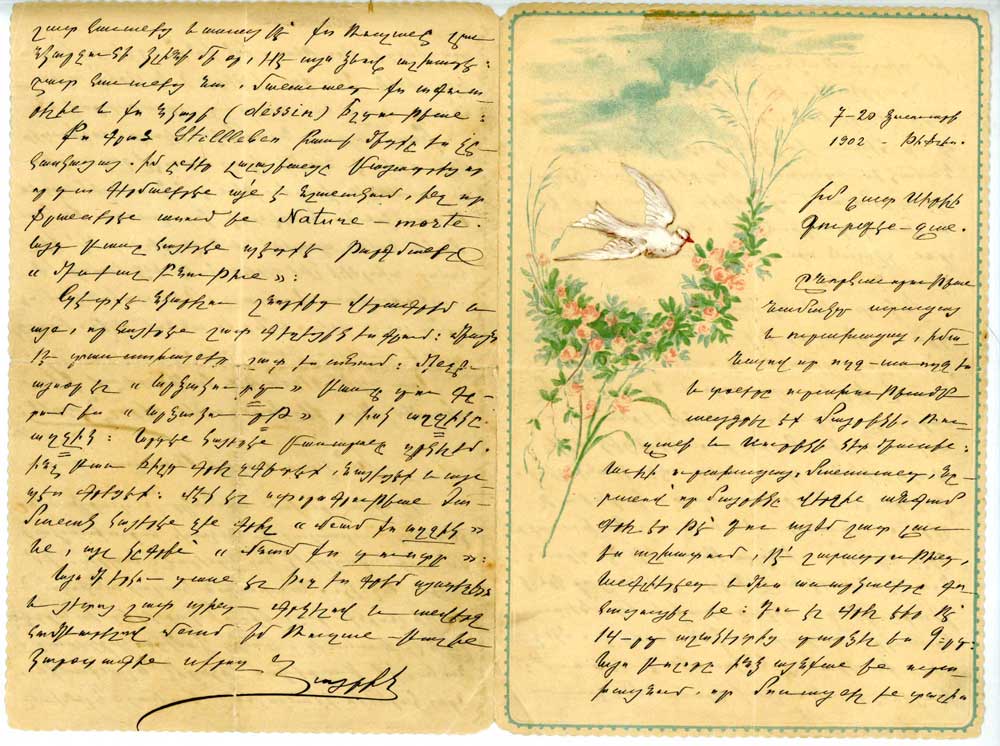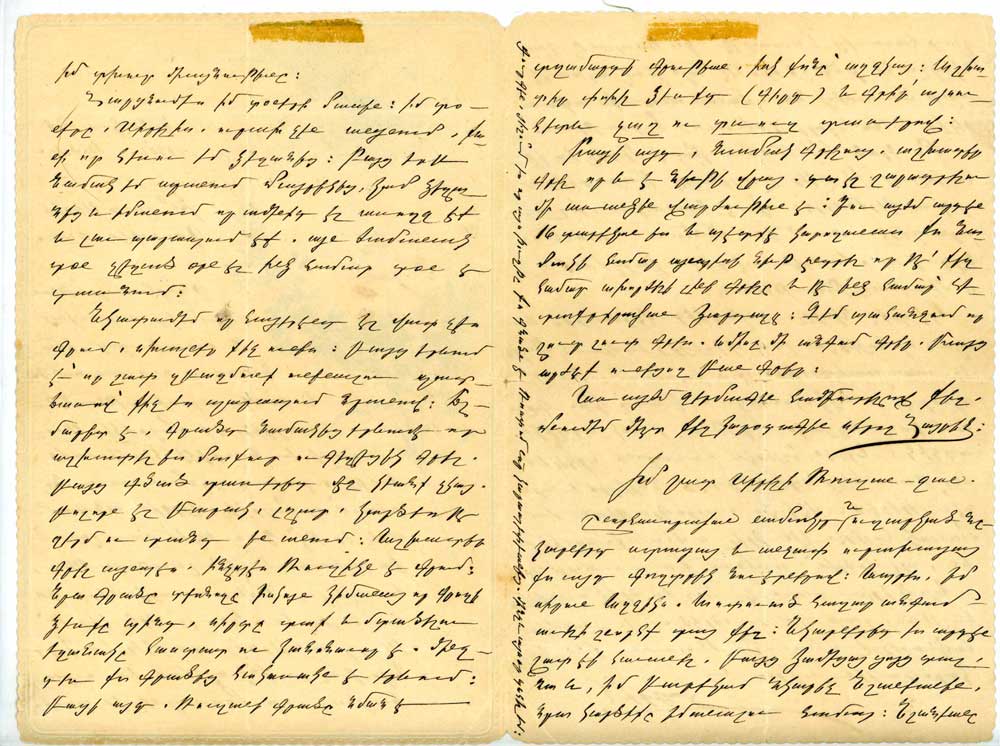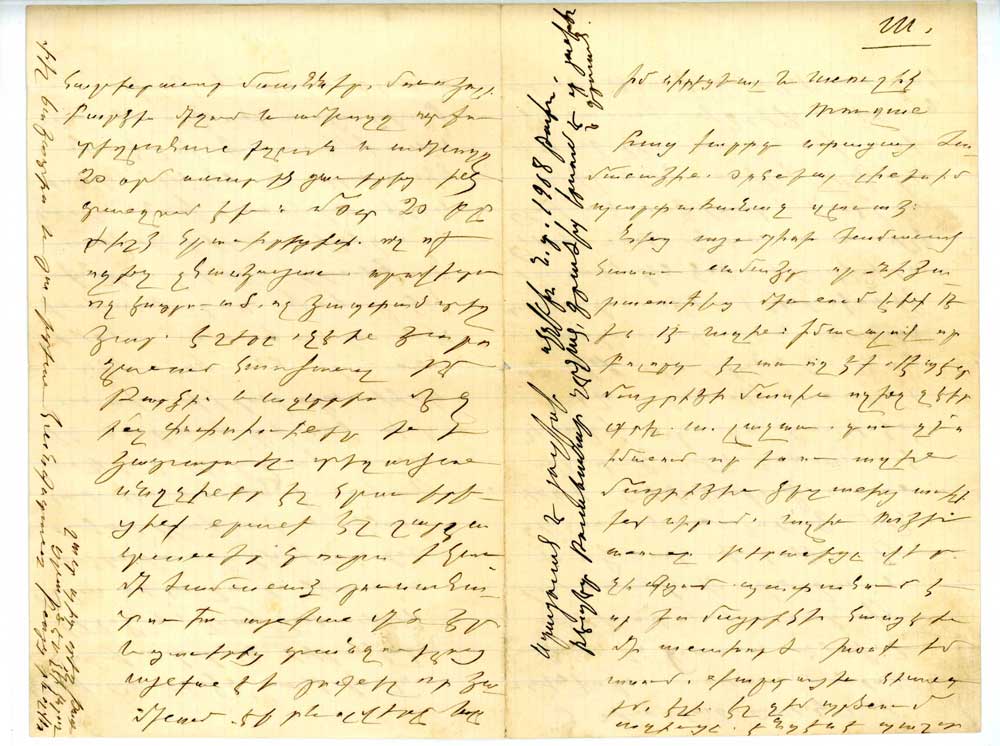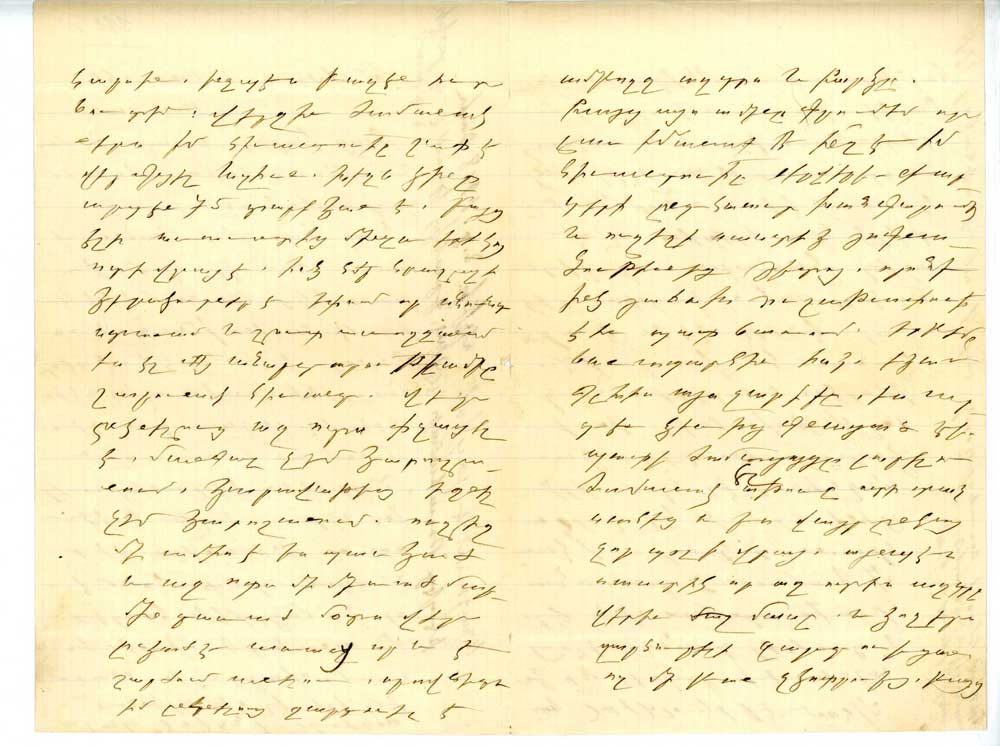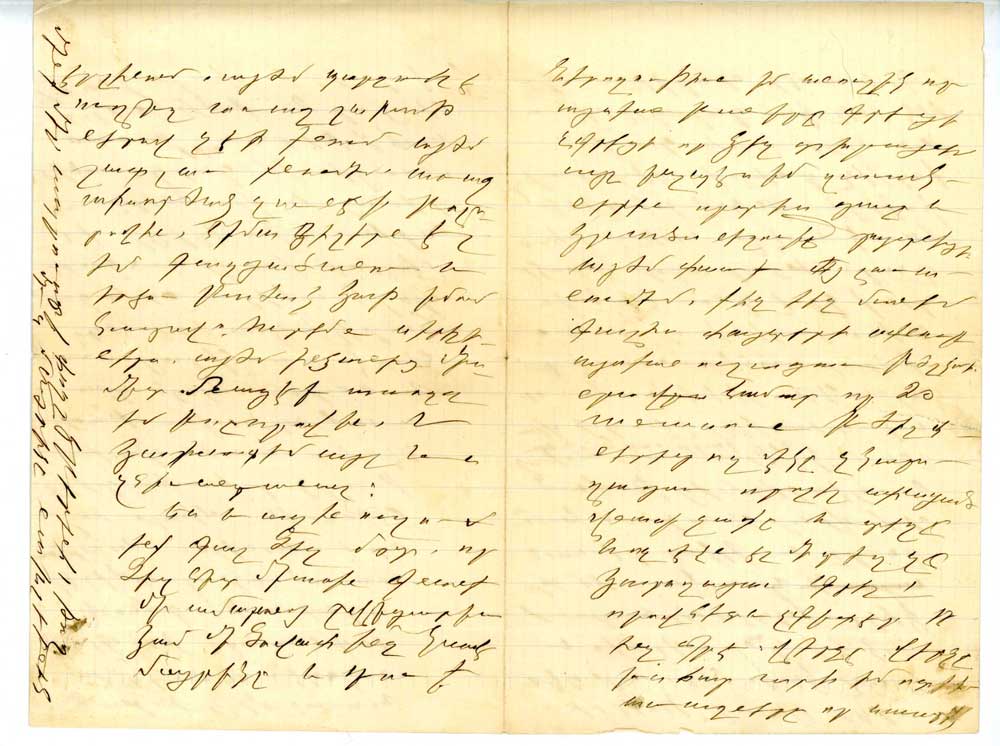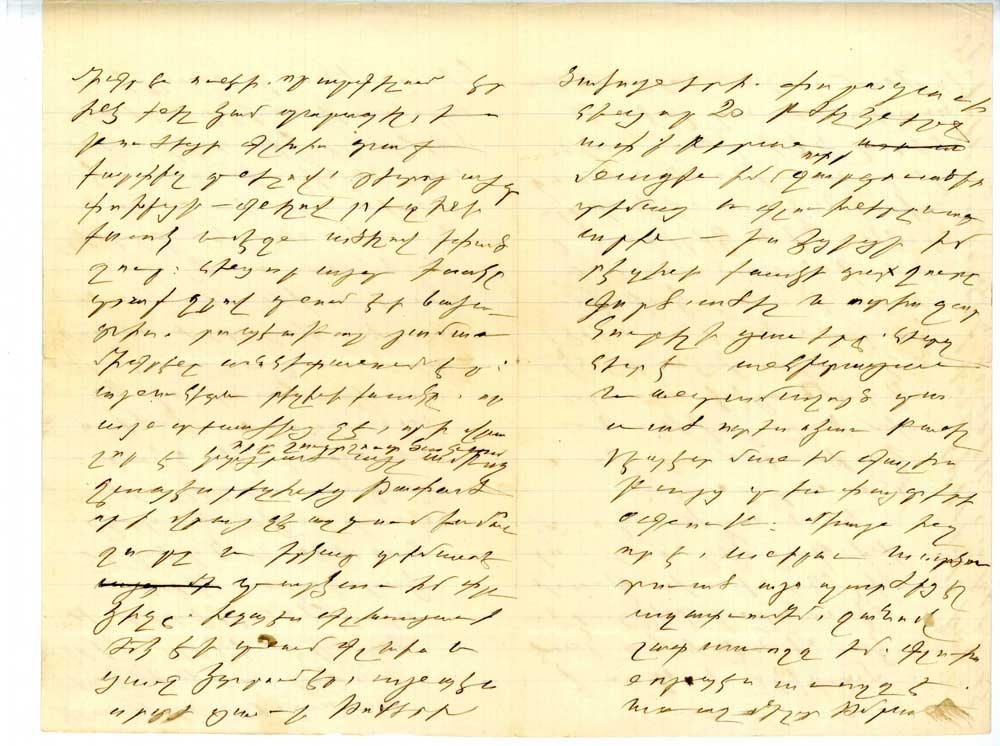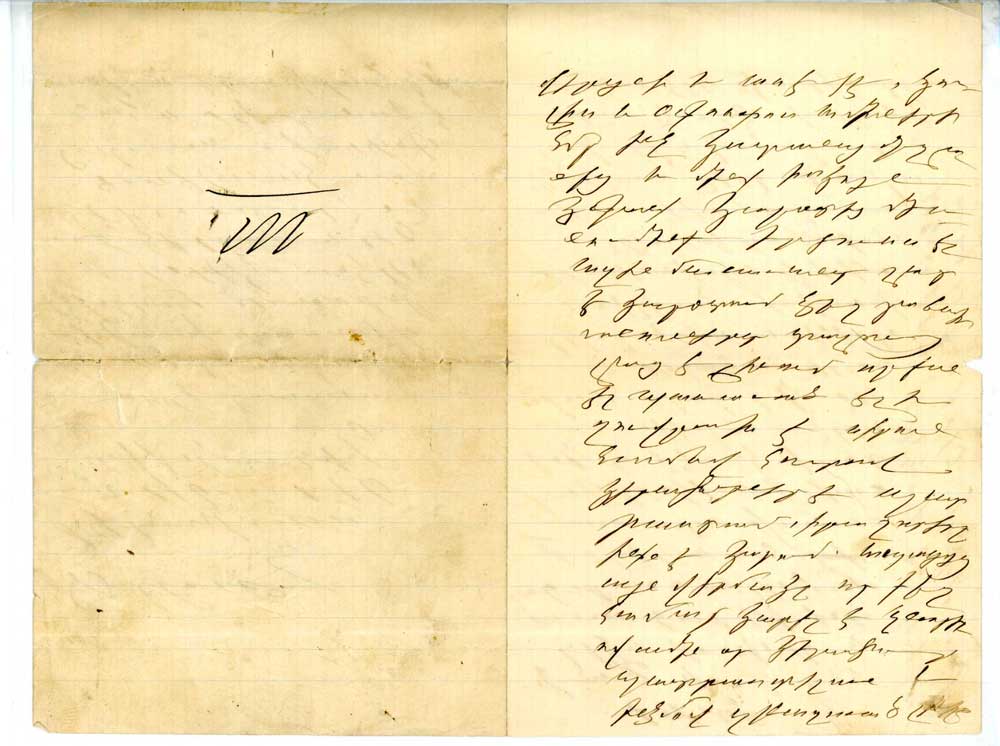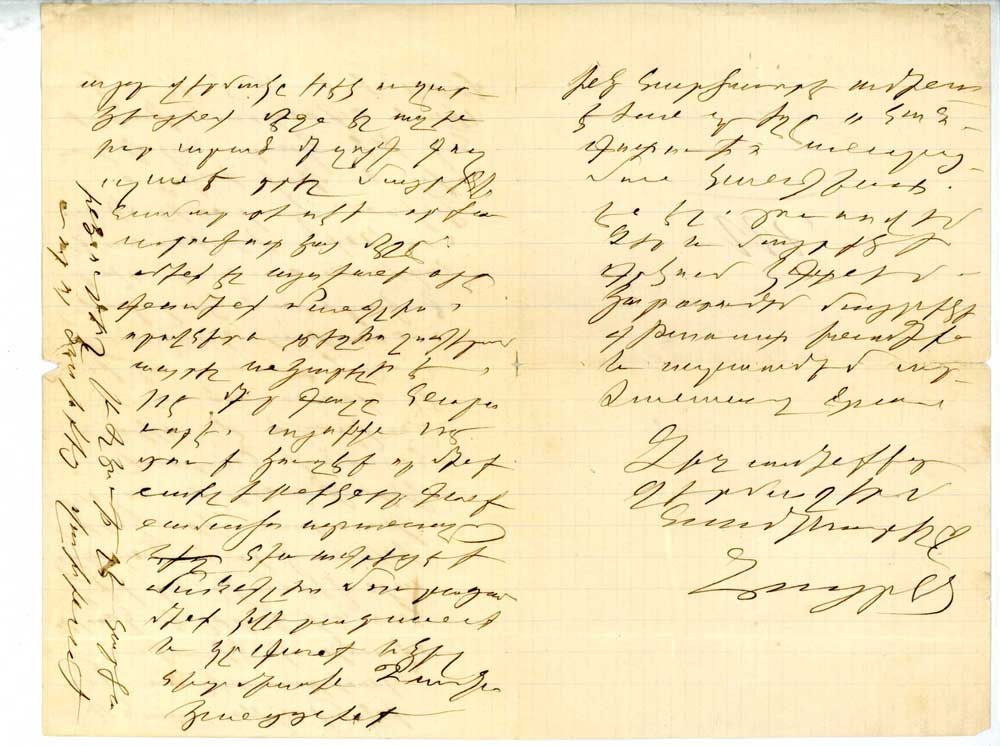
Muratsan
Muratsan was the pen name of my maternal great-grandfather, an Armenian writer of some prominence. He has nothing whatever to do with Melmoth 2, but it happens that I have a bunch of old photos of him and his relatives, as well as a long letter he wrote to my grandfather in 1902, and, since these things may be of interest to a few preterists, I am using this website to display them. My grandfather was very proud of his father, and wanted me to be proud of him as well.

Muratsan (right), looking to be perhaps in his late twenties, and his mother.
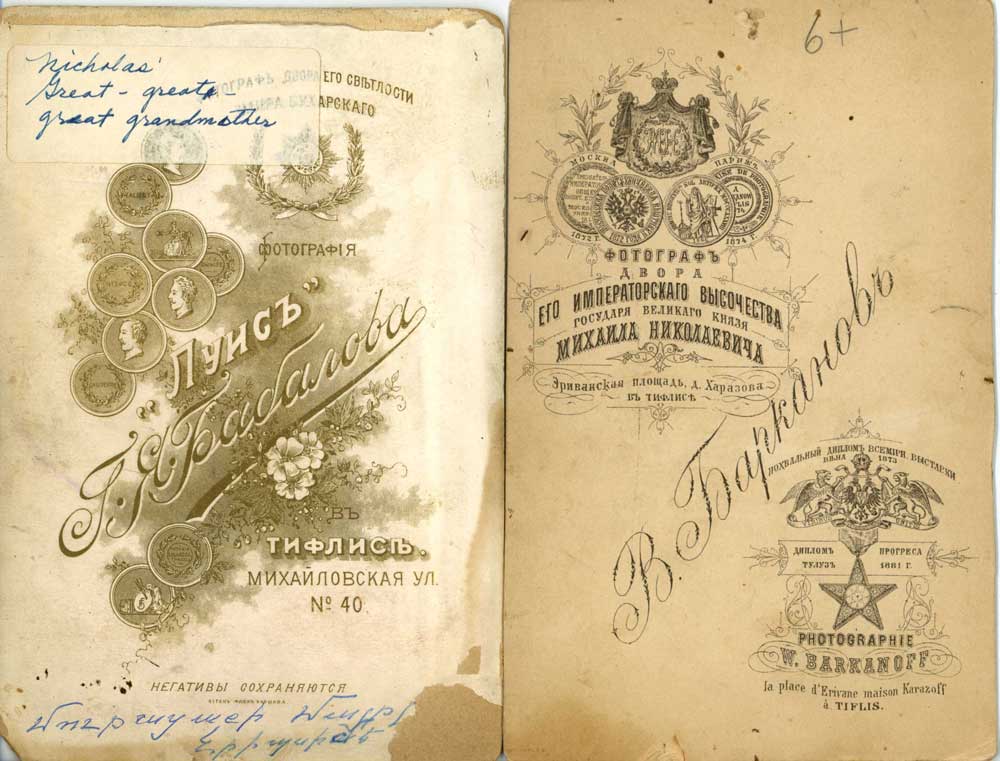
The obverse of the foregoing. Nicholas is my son; the explanatory note was written by my mother.
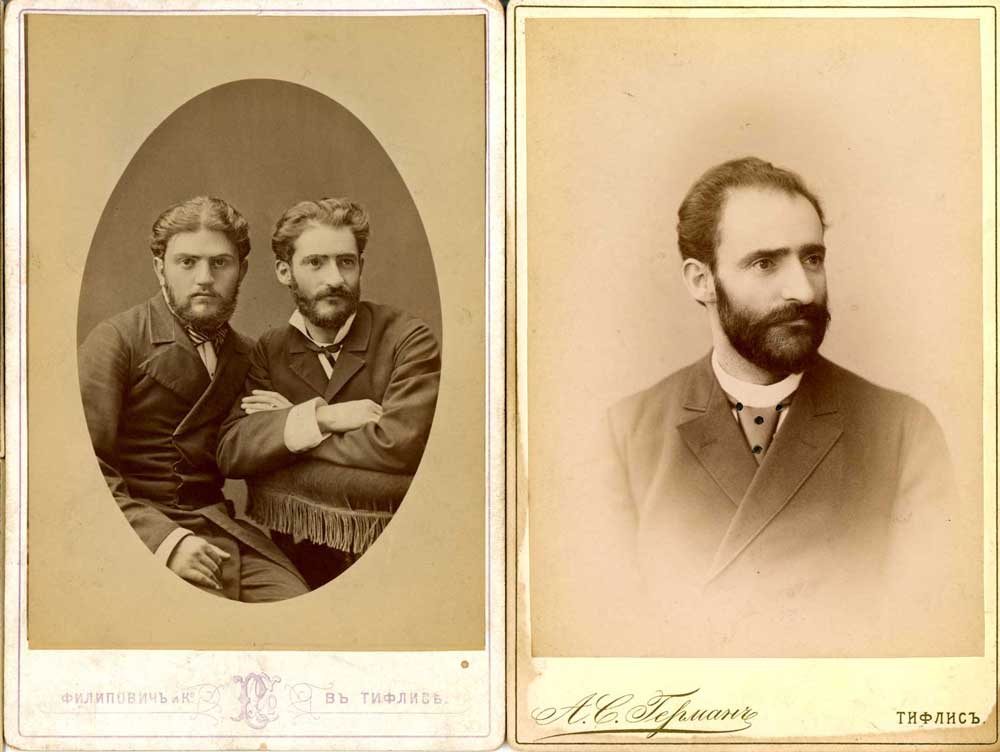
Muratsan (right) and -- perhaps, since I can't read the Armenian -- his brother, if he had one; in 1883.
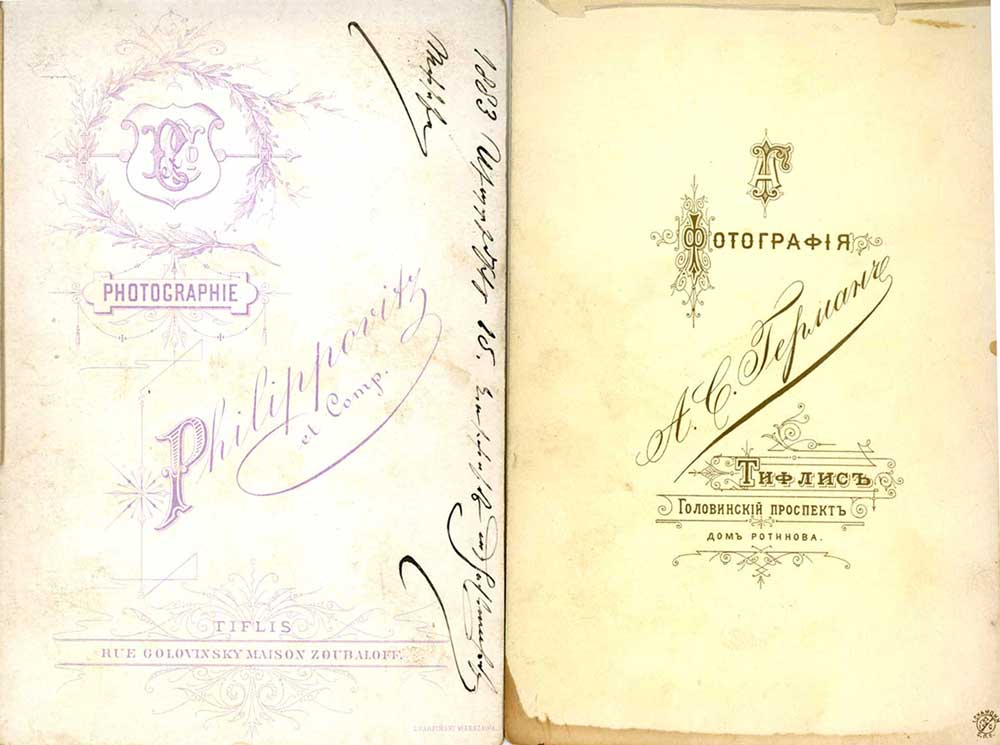
The obverse, again, of the above.
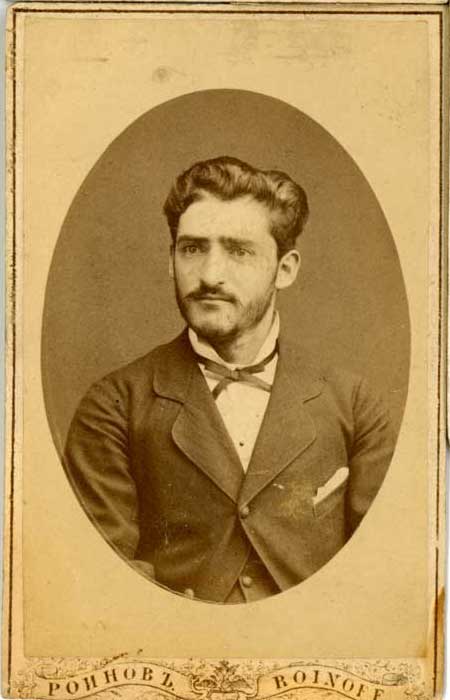
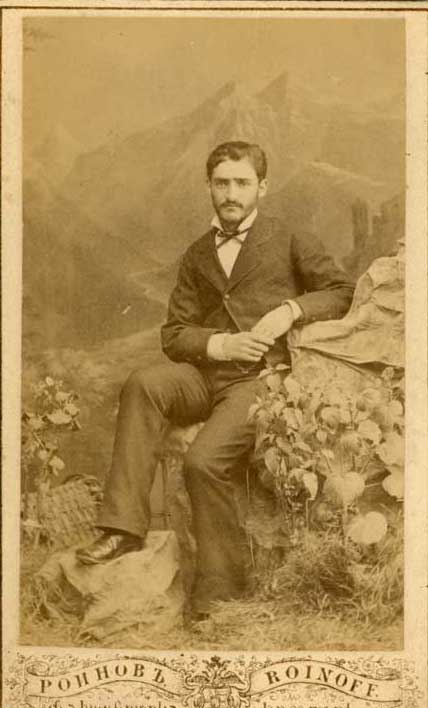
A rustic setting was apparently optional at Roinoff's.
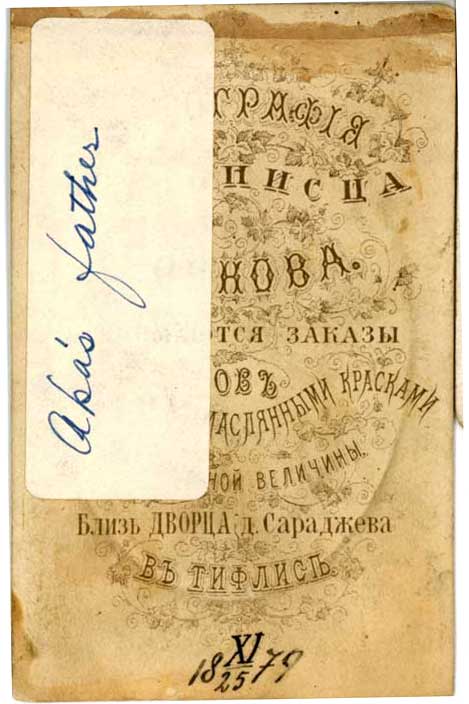
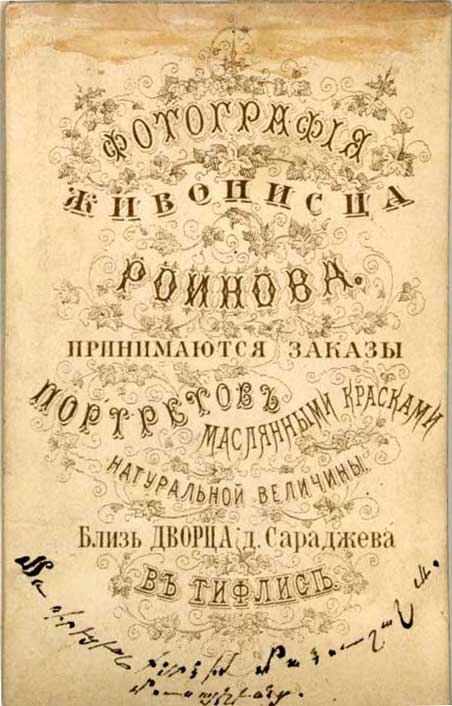
"Aka" was my baby-name for my grandfather. The date seems to mean November 25, 1879.

According to my mother, Muratsan's wife (lower left) was quite a battleax. Cultural differences may have played a part. Battleax or not, she looked pretty good at 87.
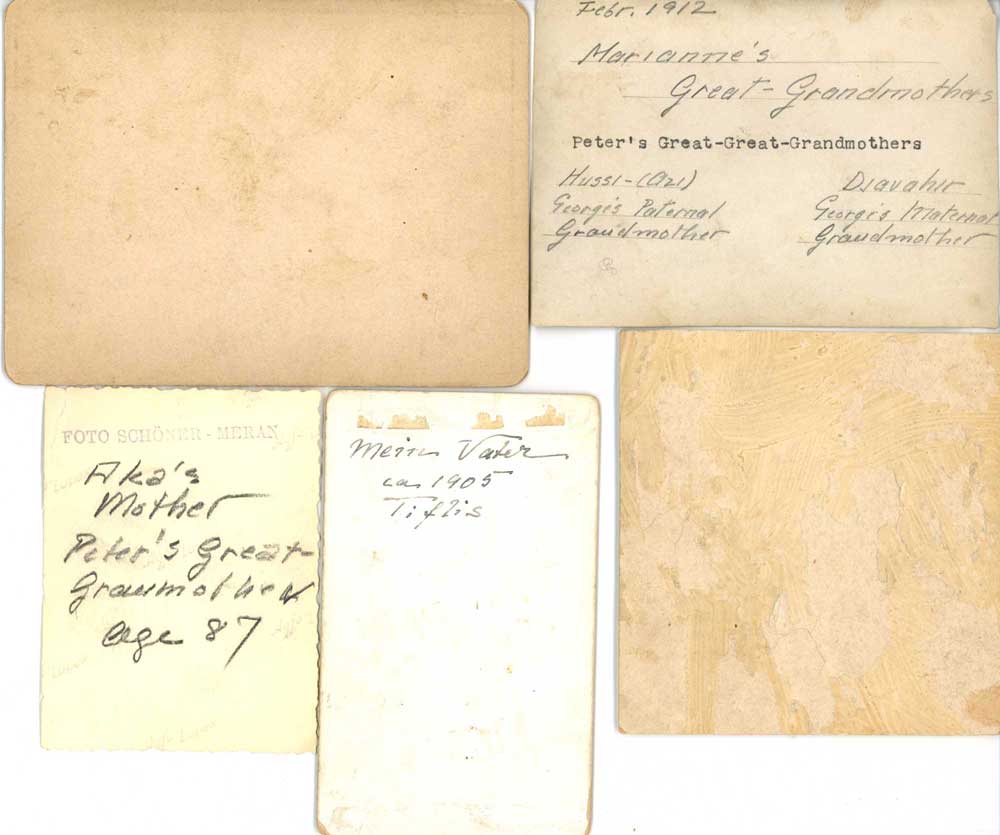
The captions, in this case, were written by my grandfather. Mein Vater = My Father.
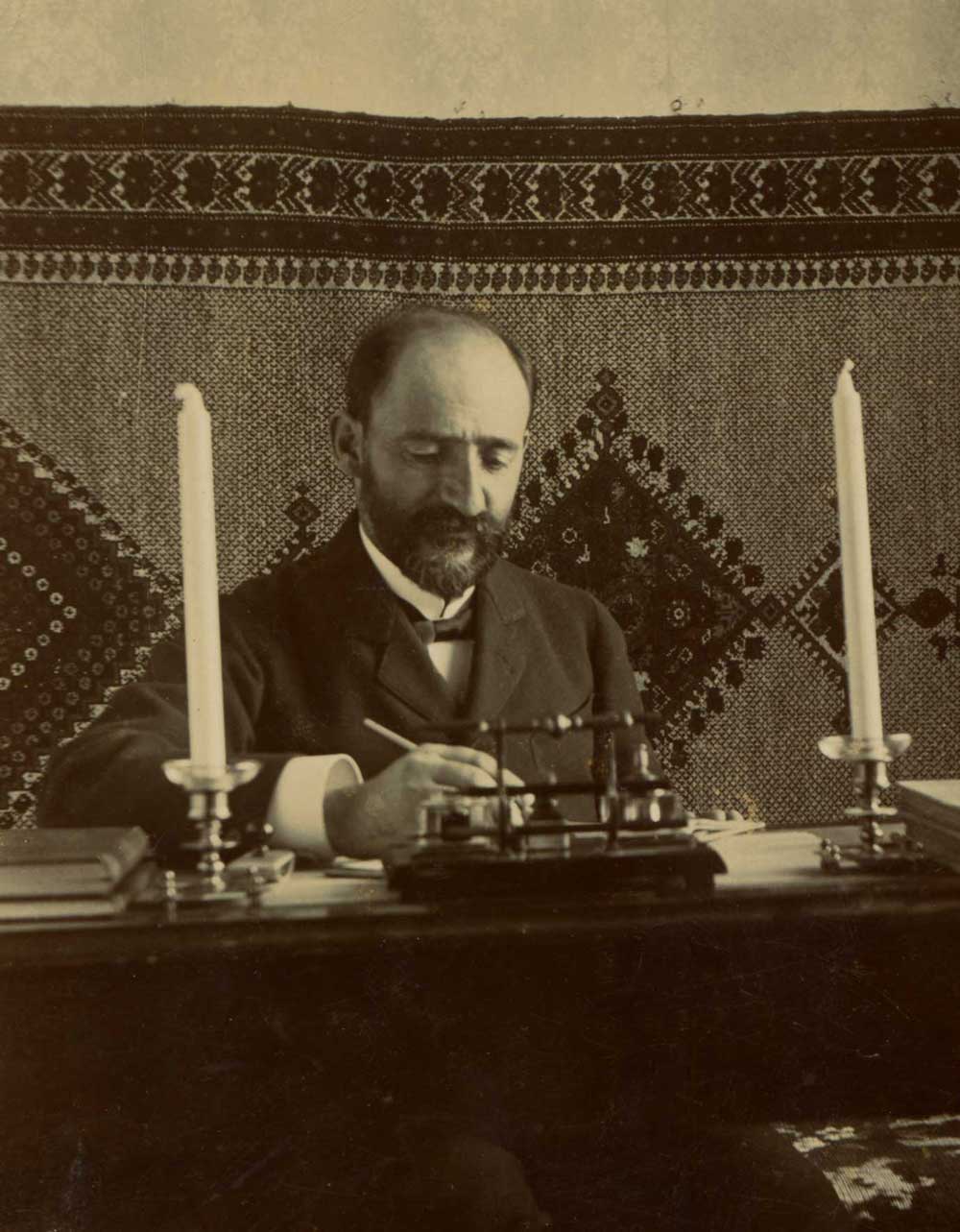

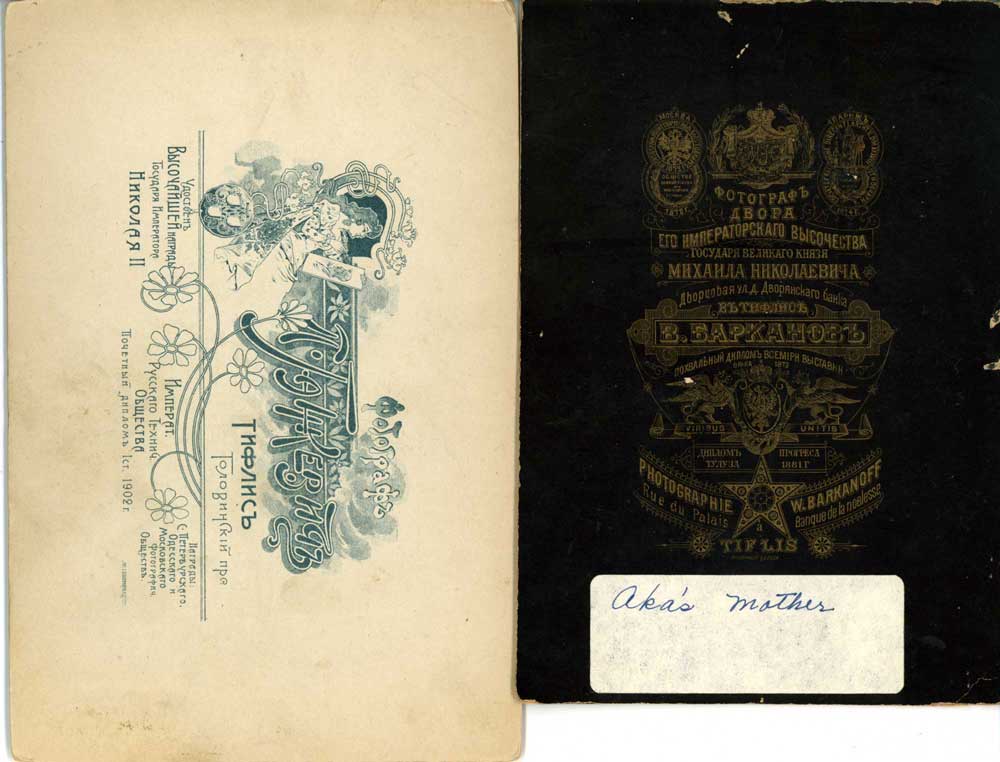

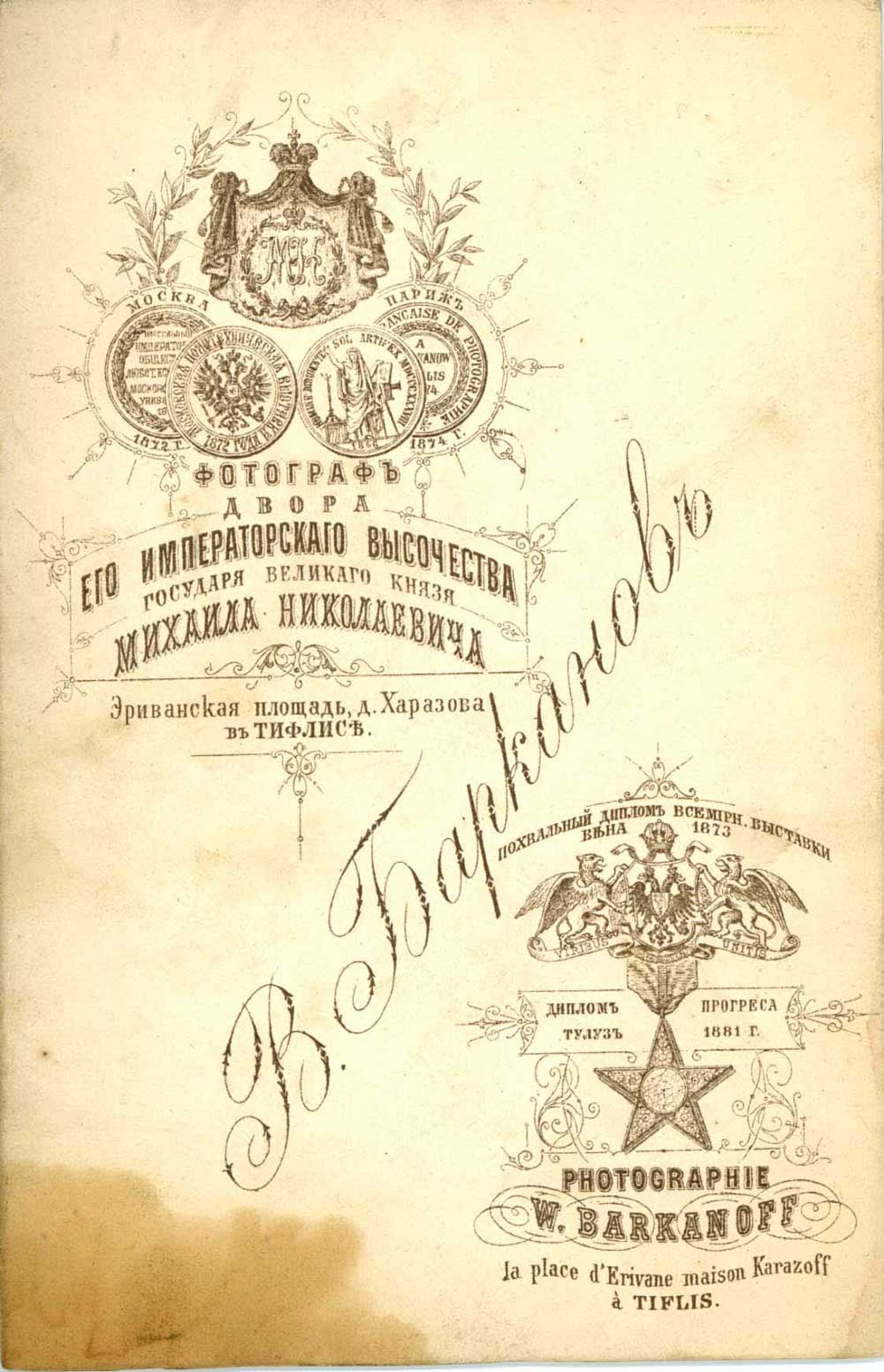
I must have been an incurious youth, because I know little about my grandfather's early life. I believe there was a general feeling in my family that there was little profit in being either Armenian or Jewish (my maternal grandmother and paternal grandfather were Jewish), and that the old countries were best forgotten. My grandfather occasionally alluded to the Turkish atrocities of 1915, which meant nothing to me at the time. The following summary represents the totality of my recollections about my mother's side of the family, which I present here in full awareness that there are few things less interesting about a famous man than his descendants.
Muratsan (Krikor terOvanesian, 1856-1908), had three children: a daughter, Rouzan; a son George, born in 1886 in Tbilisi; and another son, Souren. My mother did not know whether Souren was older or younger than George. In the letter (see below) from Muratsan to George (Gurgen) written when George was 16, Souren is referred to as Sourik. In a photograph of Muratsan with his three chldren that my doctor, Hrachya Paruyryan, found on the Internet, the face of the older boy bears a stronger resemblance to mine as a boy than does that of the younger, and I infer that George, my grandfather, was the older of the two:
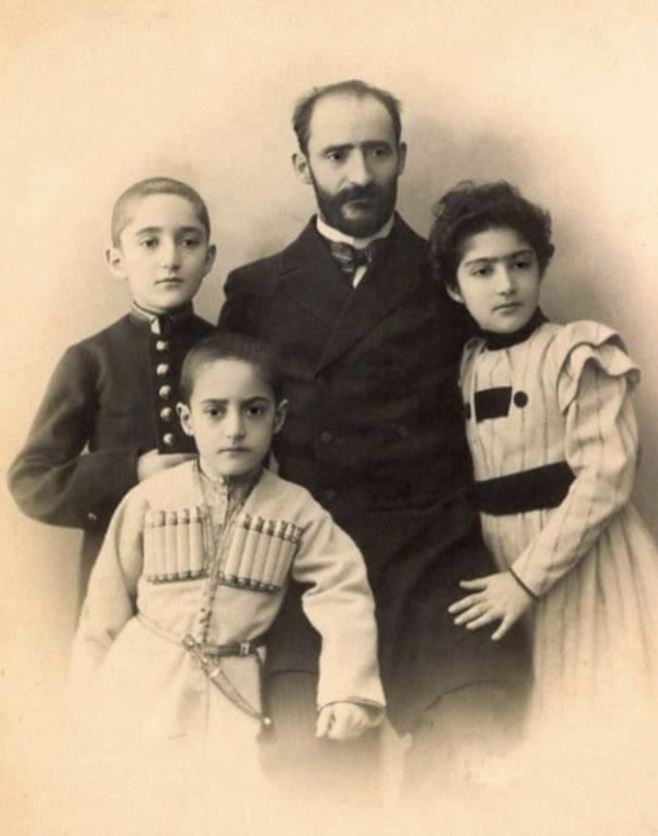
Rouzan emigrated to the United States. She was married to Erhard Boetzel, who was chief diagnostician at Lenox Hill Hospital in the Bronx (NY). They had a daughter, Eva, who was in New York in the early '40's and apparently had social contact with my mother. Eva married, and later divorced, one Harry Springer, and therewith disappears from the story.
In 1912 George, a civil engineer and architect, educated at Heidelberg, married a German, Margarethe Knoche, a designer (born in Charlottenburg, a suburb of Berlin, and possibly trained at Bauhaus). They traveled to Iran and Afghanistan while George worked as an engineer on an oil pipeline (for the British?). They had one child, a daughter, Marianne, born in Baku in January, 1917.
Around 1918-19, Margarethe and Marianne fled the Bolshevik revolution, going by train to Dahlem, near Berlin, where they stayed with relatives until around 1924-25. George, who was a Russian citizen, could not leave the country with them; instead he walked out, accompanied to the (Turkish? Iranian?) border by one of his household employees. He would describe this man as a "giant" - George himself was quite short, though strongly built - and comment approvingly that the man could have overpowered him and taken his money and sheepskin coat - it was winter - but did not. My understanding of this story (I was a teenager when I last heard it) was that it was meant to illustrate the loyalty of the lower classes to "good" aristocrats, in contrast to the wicked behavior of the revolutionary Bolshevik malcontents. In any case, the giant turned back at the border, and my grandfather kept walking.
My mother believed that he walked to Berlin, but that is unlikely; once out of Soviet-administered lands, he more probably caught a train. At some point thereafter, he went to New York and established himself as an architect. This process took some years, during which the family was separated. In New York, George, who spoke perfect unaccented English, changed his family name of terOvanesian to Johansen. Margarethe and Marianne joined him in New York in 1925. One building in New York with the design of which he was associated was the Downtown Athletic Club; it has since been razed.
In 1941 Marianne married Paul Garrison, who was born Gerson in Hamm, Germany in 1918 and had emigrated to the US in 1936. They moved to Los Angeles in 1942, and had one child, namely me, born in 1943. My father was in the army signal corps, stationed in New York, when I was born, and my grandparents moved to Los Angeles to help my mother take care of me. Thenceforth, they always lived with or near us. George died in 1959 and Margarethe in 1963.
Here are the letters that Muratsan wrote in 1902 to my grandfather, then 16, and his sister Rouzan, and to Rouzan in 1908, a couple of months before his death. I hope that I am presenting the pages in the correct order.
